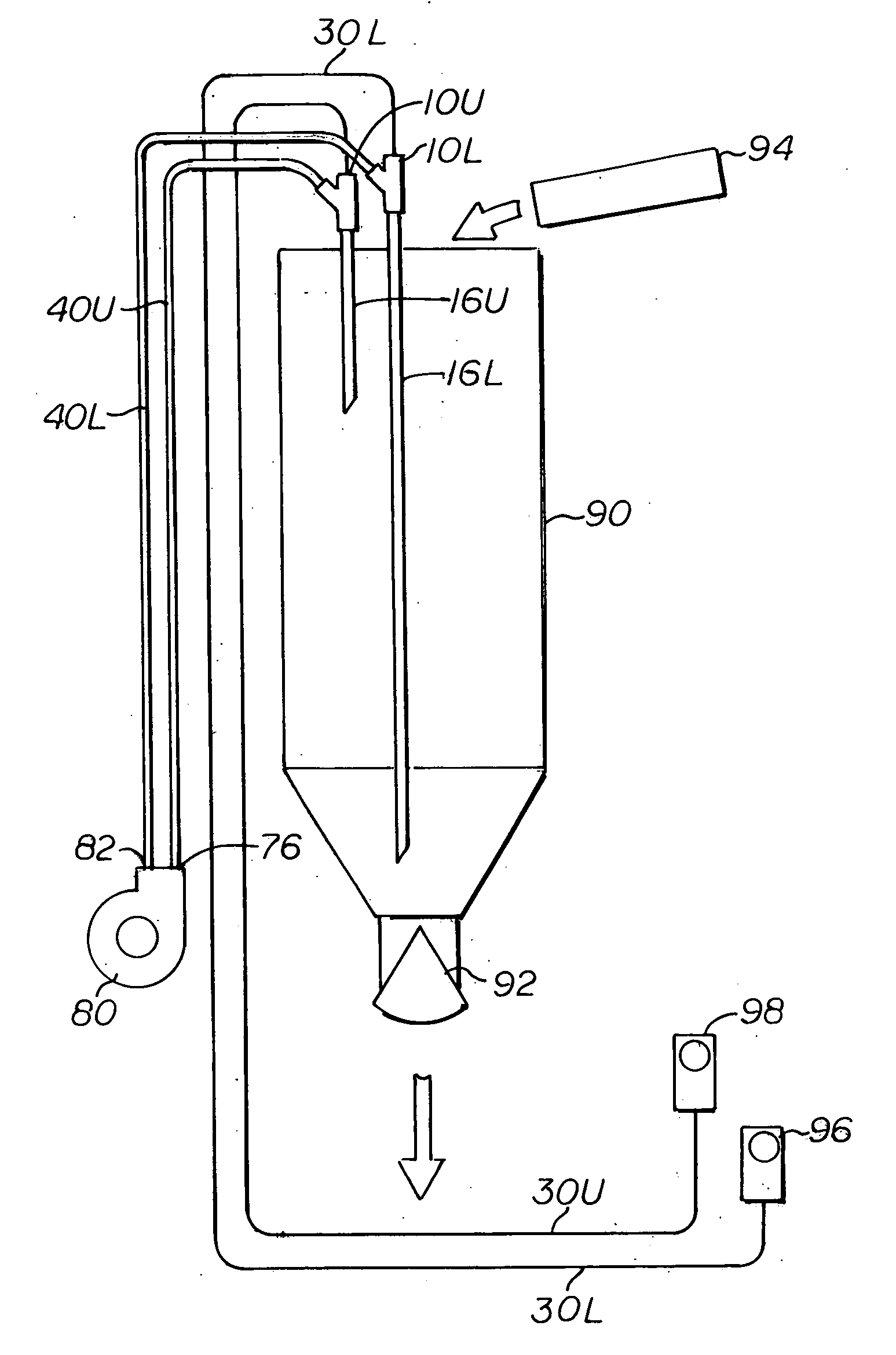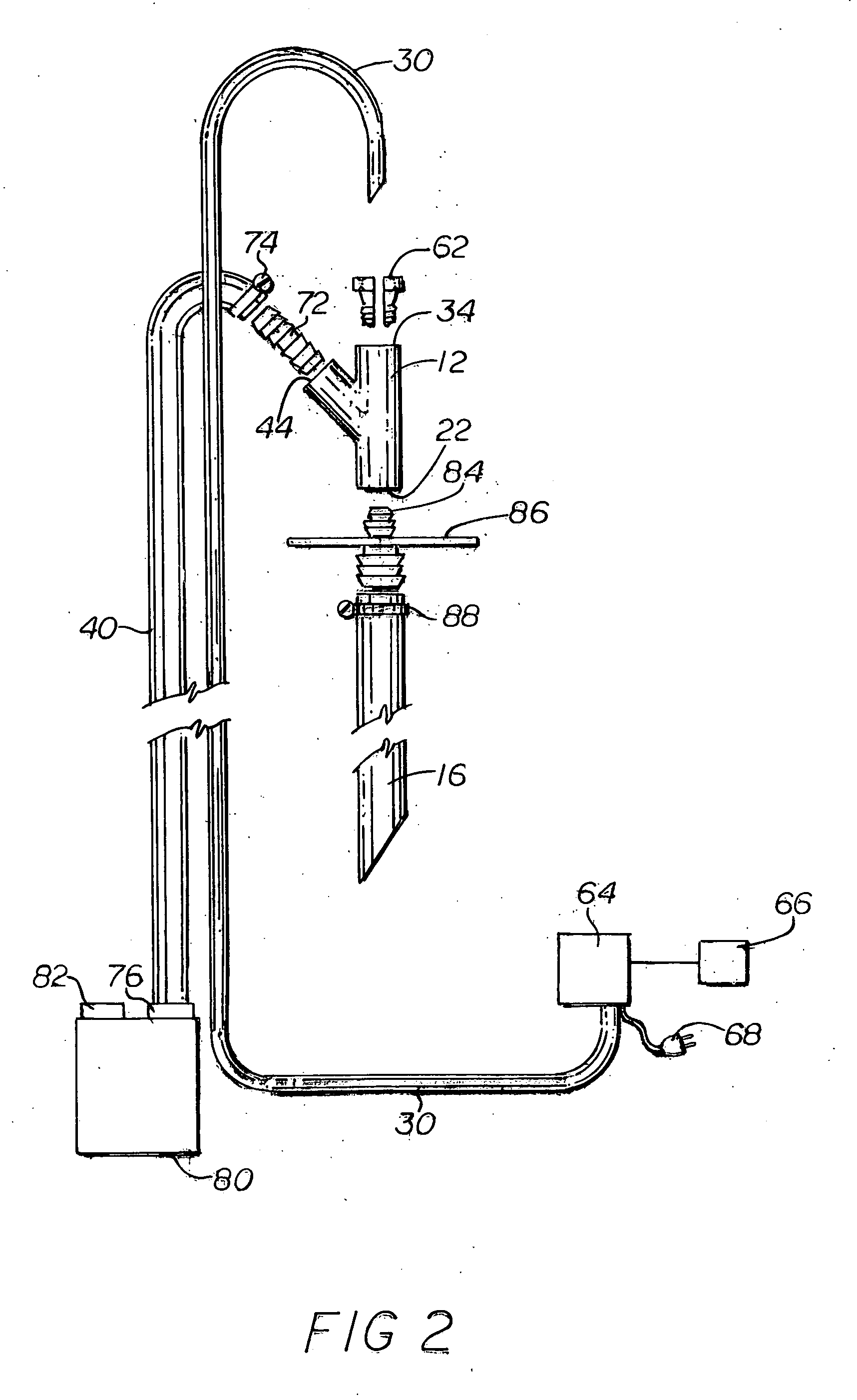Bin level indicator
- Summary
- Abstract
- Description
- Claims
- Application Information
AI Technical Summary
Benefits of technology
Problems solved by technology
Method used
Image
Examples
first embodiment
[0035] With initial reference to FIG. 1, my novel sensor 10 is illustrated, involving a housing or casing 12 in which a central chamber or bore 14 is defined. I may also refer to the device 10 as a transducer. The housing 12 may be of one-piece construction, and may be regarded as generally being in a “Y” shaped configuration and containing several apertures or orifices, to be described shortly. The housing 12 may be made of a suitable metal, or of an industrial grade plastic.
[0036] Inasmuch as my novel sensor 10 is typically utilized in a vertical attitude in a bin whose fill level is to be measured on a moment-by-moment basis, I have depicted the sensor 10 in a vertical attitude in FIG. 1. In FIG. 2 I have presented an exploded view of the housing 12 and its associated components, and in FIG. 3 I have illustrated a typical single bin installation, with which my invention may be used. In FIG. 4 I have depicted a typical multiple bin installation or multicell cluster hopper, as will...
second embodiment
[0052] It is to be noted that in accordance with another embodiment of my invention, the air flow arrangement may be reversed in order to enable a different type of material to be sensed. In accordance with this second embodiment, the previously-mentioned connector in the tube or hose 30 would be opened (broken), so as to be able to properly receive the pipe supplying compressed air at the first upper orifice 34. Continuing with this modification, the second upper orifice or aperture 44 in the offset portion of the housing 12 would be reconfigured to receive a proper connection to the remotely located pressure switch, or other readout device. I have found that when the level of an item such as pinto beans reside in the bin to be measured, it is advantageous for air to be admitted to the second upper orifice or aperture 44, as indicated in FIG. 1, whereas when the height of ground styrofoam residing in a bin is to be measured, it is more advantageous to supply the compressed air at t...
PUM
 Login to View More
Login to View More Abstract
Description
Claims
Application Information
 Login to View More
Login to View More - R&D
- Intellectual Property
- Life Sciences
- Materials
- Tech Scout
- Unparalleled Data Quality
- Higher Quality Content
- 60% Fewer Hallucinations
Browse by: Latest US Patents, China's latest patents, Technical Efficacy Thesaurus, Application Domain, Technology Topic, Popular Technical Reports.
© 2025 PatSnap. All rights reserved.Legal|Privacy policy|Modern Slavery Act Transparency Statement|Sitemap|About US| Contact US: help@patsnap.com



